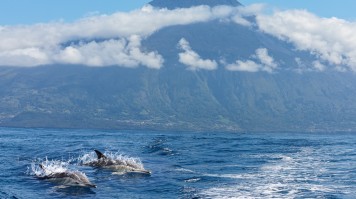Best Time to Visit the Azores
- Excellent
- Good
- Fair
- Poor
- JanAvg Daily: 16.8 ° CAvg Nightly: 15.5 ° C
- FebAvg Daily: 16.1 ° CAvg Nightly: 14.7 ° C
- MarAvg Daily: 14.7 ° CAvg Nightly: 16 ° C
- AprAvg Daily: 15.2 ° CAvg Nightly: 16.5 ° C
- MayAvg Daily: 16.4 ° CAvg Nightly: 17.8 ° C
- JunAvg Daily: 18.3 ° CAvg Nightly: 19.7 ° C
- JulAvg Daily: 20.5 ° CAvg Nightly: 21.8 ° C
- AugAvg Daily: 22.1 ° CAvg Nightly: 23.2 ° C
- SepAvg Daily: 21.5 ° CAvg Nightly: 22.6 ° C
- OctAvg Daily: 19.7 ° CAvg Nightly: 21.1 ° C
- NovAvg Daily: 17.4 ° CAvg Nightly: 18.6 ° C
- DecAvg Daily: 16.3 ° CAvg Nightly: 17.6 ° C
- Excellent
- Good
- Fair
- Poor
- Michelle K
- From
- Michelle K
- From
- Claire D.
- From
- Jessica F
- From
When is The Best Time to Visit The Azores: Quick Facts
| High season | June to August |
| Low season | December to February |
| Best season | April to June and September |
| All seasons | December to February (Winter), June to August (Summer), September to November (Autumn), March to May (Spring) |
When to Visit the Azores: Seasonal Overview
The Azores have a mild climate all year round, with gentle winters and temperate summers. The temperature rarely drops below 10°C in winter or exceeds 25°C in summer. Being exposed to the winds of the Atlantic Ocean, the weather in the Azores changes quickly, especially during mid-seasons. The frequent changeover between rain and blue skies is the reason for the lush and green landscapes that characterize the archipelago.
Spring in The Azores — March to May


Spring is generally a period of weather instability throughout the archipelago, with frequent showers alternating with bright, sunny days. Thanks to longer and warmer days, the islands’ flowers start to bloom, coloring the roadsides with the iconic hydrangeas. This is the ideal period for whale-watching enthusiasts, as it’s the best time to spot various species of whales and dolphins passing through the islands during spring and summer migrations. Hiking in spring is another popular activity thanks to the comfortable temperatures and long days, but don’t forget your rain jacket!
| Avg. temperature | 14ºC (57ºF) – 18ºC (64ºF) |
| Avg. rainfall | 38 mm |
| Is spring a good time to visit the Azores? | Yes, regardless of the unpredictable weather, spring is still one of the best times to travel to the Azores. You can enjoy all the outdoor activities the islands have to offer while avoiding the crowds of tourists. |
Highlights:
- Drive the iconic road to Sete Cidades in São Miguel to see the magic scenery of the hydrangea in bloom.
- Go whale-watching in Terceira, Pico, Faial and São Miguel to see the whale migration from May to early June.
- Take advantage of the low season and experience the most popular activities in the Azores in a peaceful environment, such as the hike to the summit of Pico, the hot springs of Dona Beija in São Miguel, and the Fajãs das Lagoas de Santo Cristo e dos Cubres in São Jorge.
- Don’t miss the largest music festival in the Azores, the annual Tremor Festival in São Miguel, in March or April. Check out the several concerts in breathtaking locations.
- Visit the Terra Nostra Botanical Gardens in São Miguel to see the blooming of native and exotic species.
Travel tips:
- Be ready for sudden rains, especially in March and early April. Make sure to wear layers and bring waterproof clothes, especially when hiking.
- Keep in mind that early spring is characterized by sudden strong gusts that can cause delays or cancellations in flights. Leave room for last-minute changes in your itinerary.
- Prices of rental cars and accommodations tend to be lower during early spring. A good way to travel comfortably on a budget!
- Be aware of the islands' seasonality, many activities and tours, such as swimming with dolphins, are only available during the high season.
- Be flexible and plan around the islands' changing weather. You can go to the hot springs or join a cheese degustation when the weather is bad, and head to the beach on sunny days.
In-depth monthly guides:
The Azores in March
The Azores in April
The Azores in May
Summer in The Azores — June to August

This is the peak season in the Azores, when the weather becomes more consistent, with long sunny days and sporadic showers. The temperatures are higher and people start to crowd the beaches of the islands. The period is perfect for enjoying water sports, such as surfing and windsurfing, going hiking, camping and doing all kinds of outdoor activities. The beautiful colors of summer will grant spectacular sceneries with breathtaking sunsets and lush green hills spotted with flowers. This is also the busiest period of the year, so expect slightly higher prices and more crowds.
| Avg. temperature | 19ºC (66ºF) – 22ºC (71ºF) |
| Avg. rainfall | 20 mm |
| Is summer a good time to visit the Azores? | Yes, the long days and more reliable weather allow you to fully experience the Azores and enjoy its wild nature. These are the best months to visit the Azores. |
Highlights:
- Surf at Santa Barbara Beach in São Miguel, one of the most renowned surf spots in Europe.
- Throw a BBQ in one of the many picnic areas that abound on the islands. You can find them next to all the major viewpoints (miradouro) in the archipelago.
- Hike the waterfall trails and swim in the refreshing waters of the islands. Don’t miss Salto do Prego and Salto do Cagarrão in Faial and Salto do Cabrito and Salto do Prego in São Miguel.
- Find your favorite beach and natural pools in the Azores. From central and easy-to-reach sandy beaches, such as Praia das Milicias and Praia de São Lourenço, to remote natural pools such as fajã da Caldeira de Santo Cristo in São Jorge, only reachable by boat or with a 4-hour hike.
- Join a kayak tour in the unique volcanic lakes of Sete Cidades, only available during high season.
Travel tips:
- Book your tours, activities as well as restaurant tables well in advance. Peak season can get busy very quickly, especially in São Miguel.
- Sun in the Azores can be very strong, even when it's overcast. Don’t forget to wear sunscreen if you’re planning to spend the day outdoors.
- Bring clothes for all seasons. Weather in the Azores can change quickly even during summer. It’s a good idea to arrive prepared with some sweaters and waterproof clothes.
In-depth monthly guides:
The Azores in June
The Azores in July
The Azores in August
Autumn in The Azores — September to November

With the heat of the summer months wearing off, autumn in the Azores is a great time to enjoy any summer activities but without the crowds of high season. The temperatures are a bit lower and the rain showers might be more frequent, especially towards November, but all the colors and the summer flowers are still out to enjoy. This is the perfect period to enjoy the hot springs of São Miguel during the colder days and go hiking when the sun is out.
| Avg. temperature | 15–21º C / 59–69º F |
| Avg. rainfall | 55 mm |
| Is autumn a good time to visit the Azores? | Yes, especially in the earlier months when the rains are still sporadic and the temperatures are comfortable. It’s a good time to enjoy most of the activities you can do in summer without the chaos of peak season. |
Highlights:
- Go birdwatching to spot the migrant birds passing through the Azores.
- Visit the hot springs in Furnas and Ferraria in São Miguel.
- Enjoy the foliage and the autumn colors while driving the winding roads of the islands.
- Join a wine and cheese degustation and try the local São Jorge’s products.
- Experience the surreal atmosphere of a misty day on the lakes of Sete Cidades.
Travel tips:
- If you are traveling by ferry between the islands, check the sea conditions in advance and in what period the service is provided, as some connections are interrupted during autumn and winter.
- The thermal waters of São Miguel can stain light fabrics. Make sure to bring a dark swimsuit and towel to avoid surprises!
- Check the island webcams on Spotazores.com before leaving for a hike. Sometimes the sun shines on one side of the island while it rains on the other.
- Mid-season waves can be big and unpredictable. Be aware of seasonality if you are planning a surf trip to the Azores.
Winter in The Azores — December to February


The winter months in the Azores are the most humid and stormy of the year. While the weather can be rough at times, temperatures are still enjoyable, making the archipelago a good destination for a winter escape. To enjoy winter on the island it is essential to arrive well-prepared, with the right clothes for strong winds and rain. Working in accordance with the weather is pivotal to fully enjoying your stay. While hiking and outdoor activities are still possible on good days, you can opt for guided visits to the island’s tea and pineapple plantations, a degustation tour, or a relaxing day at the thermal bath when the weather is not cooperating.
| Avg. temperature | 13–16º C / 57–60º F |
| Avg. rainfall | 61 mm |
| Is winter a good time to visit the Azores? | Yes, if you are looking for a winter escape in a temperate climate. But don’t expect to go to the beach sunbathing, as the weather is very unpredictable with heavy winds and frequent showers. |
Highlights:
- Discover the Azorean cuisine and try the best restaurants on the islands without queues. Don’t miss the iconic Cozido das Furnas, Grilled Limpets and the sweet bread Bolo Lêvedo.
- December and January are quite consistent for surfing and the water temperature doesn’t go below 16°C.
- Sip a cup of tea while visiting the Gorreana tea plantation in São Miguel, the oldest and only tea plantation in Europe.
- Go hiking in the Azores' many trails and enjoy the wilderness without tourists.
Travel tips:
- Flights and accommodations during winter are cheaper and easier to find for the dates that suit you best.
- Don’t let the rain stop you! Good waterproof clothes and heavy boots go a long way. You can still go hiking and enjoy the outdoors, but make sure to check the forecasts for seasonal storms.
- Keep an eye on the official website of the Portuguese Institution of Sea and Atmosphere (IPMA) to be up to date with forecasts and weather alerts.
- Night storms can get intense and road disruptions due to rock slides are not uncommon. Be extra safe on the road when driving at night and in the morning after a heavy rain.
In-depth monthly guides:
The Azores in January
The Azores in February
The weather in the Azores is unpredictable and can vary dramatically in just a few hours. Flexibility is key to enjoying the archipelago and making the most out of your stay. Be ready to deal with humidity and rain, as well as blue skies and idyllic sceneries. The best time to visit the Azores is in summer. It is a good choice to maximize your chances of sunny days, but expect many tourists and crowds. We suggest visiting the Azores from April to June and September to enjoy the good weather and the relaxing island atmosphere. For more information on traveling to the Azores, check out our guide on how many days to spend in the Azores.
Weather in The Azores: Rainfall and Temperatures
| Month | JAN | FEB | MAR | APR | MAY | JUN | JUL | AUG | SEP | OCT | NOV | DEC |
| Avg Daily (°C) | 16.8 | 16.1 | 14.7 | 15.2 | 16.4 | 18.3 | 20.5 | 22.1 | 21.5 | 19.7 | 17.4 | 16.3 |
| Avg Nightly (°C) | 15.5 | 14.7 | 16 | 16.5 | 17.8 | 19.7 | 21.8 | 23.2 | 22.6 | 21.1 | 18.6 | 17.6 |
| Avg Daily (°F) | 63 | 61 | 59 | 60 | 62 | 65 | 69 | 72 | 71 | 68 | 64 | 62 |
| Avg Nightly (°F) | 60 | 59 | 61 | 62 | 65 | 68 | 72 | 74 | 73 | 70 | 66 | 64 |
| Avg Rainfall (mm) | 47 | 47 | 30 | 41 | 44 | 21 | 15 | 26 | 36 | 86 | 43 | 89 |







